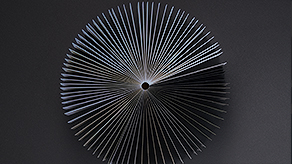Evidence Guide: China Patent Infringements (Part I)
Evidence Guide: China Patent Infringements (Part I)
In Chinese judicial adjudication, the central principle of “fact-based and law-based” decision-making dictates that all facts must be backed by evidence. Therefore, evidence is commonly referred as king of legal proceedings. However, different from United States, the absence of pretrial discovery in China and the application of the doctrine of “whoever asserts the claim bears the burden of proof” mean that plaintiffs often find themselves with a higher responsibility to substantiate their claims.
In intellectual property infringement cases, plaintiffs are generally expected to provide evidence that establishes the alleged infringement, the factual basis for holding the opposing party liable, and the calculation of damages. The degree of difficulty in evidence collection varies vastly depending on the technology at the center of intellectual property disputes. In particular, in cases involving process patents, large-scale equipment patents, and B2B product patents, plaintiffs may face enormous challenges in obtaining from an accused infringer evidence for the latter’s production methods or allegedly infringing products, which leads to significant obstacles in securing sufficient proof of infringement. Consequently, right holders may fail to gather all the potential evidence for damages calculation, which results in inadequate compensation awards and thereby undermines the overall effectiveness of litigation.
Drawing from our practical experience in patent infringement litigation and building on insights gained from case examples, this article presents strategies for collecting evidence for alleged infringement and approaches to address the challenges of evidence presentation in judicial practices.
Proof of Patent Infringement
As per Article 11 of the Patent Law of the People’s Republic of China, no individual or entity may utilize a patented invention or utility model without the patentee’s consent, unless otherwise specified in the law. Such prohibited utilization includes activities such as unauthorized manufacturing, using, offering for sale, selling, or importing a patented product, employing the patented process, and utilizing, offering for sale, selling, or importing products directly derived from the patented process for commercial purposes. Similarly, once a design patent is granted, any manufacturing, offering for sale, selling, or importing of products bearing the patented design for business purposes is prohibited without permission from the patentee.
To establish proof of infringement, it is necessary to demonstrate that the alleged infringer has engaged in the aforementioned activities. The following methods can be employed to gather evidence:
1.Notarized Purchase of the Alleged Infringing Product
1)Importance of notarization in evidence collection
A notarized purchase involves the acquisition of an allegedly infringing product in the presence of a notary public.
Given the prevalence of evidence tampering in practice, a notarized purchase is particularly important for gathering evidence. Rigorous scrutiny is imposed on key evidence in judicial proceedings. Non-notarized purchases may be challenged by the opposing party. Consequentially, the evidence collected may be deemed inadmissible. Therefore, a notarized purchase of an allegedly infringing product is considered one of the most effective and reliable means of proving infringement.
Notarizing the purchase of goods available in the public market is generally straightforward. However, the process becomes significantly more complex when it comes to B2B products, particularly in specialized fields where the sales channels are more constrained. While this added complexity may present a challenge, it is not an insurmountable obstacle.
To facilitate the notarization of such purchases, meticulous advance preparation is recommended. Engaging a professional investigator to examine the business operations of the target company and the product in question is essential. Such investigation helps identify potential avenues for contacting the target company to explore purchasing options.
2)Thorough investigation before notarization
In our experience, there have been instances where the acquisition of a notarized purchase initially appeared impossible. In a recent case we handled regarding a patent infringement dispute related to an invention, the product in question was not available in the consumer goods market. Despite the seeming impossibility of obtaining the product, through market visits and investigations, we discovered that the manufacturer of the infringing product had an agent dealer who was willing to offer us multiple samples. This experience underscores the importance of thorough investigation and creative problem-solving in navigating the complexities of notarizing special product purchases.
The notarized purchase of goods that constitute allegedly infringement serves as a strong piece of evidence in establishing the infringement. Such purchase effectively showcases the accused’s sales activities. Additionally, if the purchased item bears the manufacturer’s name, address, trademark, or other identifiers on the product or its packaging, it supports the claim of infringement by providing concrete proof of production and sale by the manufacturer.
3)Abnormal notarized purchases
In practice, some manufacturers may evade responsibility by claiming that allegedly infringing products are counterfeit. However, without substantial proof to back up these assertions, such claims may not hold up. Therefore, if a product bearing the manufacturer’s logo is purchased and notarized, it can be established that the alleged infringer engaged in production or sales of such product. Furthermore, the purchased item can be utilized for comparison between the protected intellectual property and the allegedly infringing product, thereby helping substantiate infringement claims.
In the case that a product lacks any identifying markings, it will be challenging, in particular for the right holder, to gather evidence to identify the producer of the product. In such situations, it will help to examine the seller’s business scope, production capacity, and promotional practices. If the seller’s business activities encompass production and it markets itself as possessing manufacturing capabilities, yet it fails to provide information about the product’s source, it is reasonable to deduce that the seller is the producer of the product.
In some cases, despite the absence of producer markings on the infringing products we purchased, we successfully demonstrated that the seller was the manufacturer by presenting evidence such as the seller’s industrial and commercial registration details, promotional materials, and brochures, ultimately winning the court’s endorsement. As a result, the opposing parties were ordered to cease production and sale of the infringing products and to pay our clients substantial compensation.
Conversely, if the seller’s business scope does not encompass production and its business model clearly identifies it as a distributor, it will be more challenging to prove that the seller is engaged in manufacturing. In such instances, it is recommended to pursue legal action to compel the seller to disclose the product’s source and any information regarding the manufacturer, which will help to track down the manufacturer and mitigate potential damage.
4)Multi-stage evidence collection strategy
In certain infringement cases, particularly those involving large industrial products, securing purchase notarization may present obstacles, and properly engineered strategies can reduce frictions. A case in point would be a patent infringement lawsuit we worked on that related to substantial chemical equipment, for which we devised a multi-stage evidence collection strategy. To assemble preliminary evidence for the case, we leveraged descriptions of the equipment from the unauthorized manufacturer’s own official website and exhibition materials, along with the technical specifications from the bidding announcements from the users. Once the lawsuit was initiated, we requested the court for evidence preservation and conducted on-site inspections to document and technically compare the key features of the infringing equipment with those of our client. In situations similar to this case, having a well-conceived and effective evidence collection strategy is essential for proceeding with the case in the right direction.
2.Our Advice for Notarized Purchases
In practice, a purchase typically comprises several steps, including contract signing, ordering, payment, and receipt of goods. For everyday items, these steps often occur almost simultaneously, making it easier to notarize the entire process. However, in the case of B2B product purchases, intervals between the steps are not uncommon. Therefore, it is essential to ensure that each step proceeds in close succession to the previous one to create a coherent chain of evidence.
As previously mentioned, it is advisable to engage a professional investigator during the initial stages of the notarized purchase for such process to be carried out smoothly. The involvement of a lawyer is also crucial for executing a notarized purchase. We have handled instances where the parties concerned had engaged an investigation company to facilitate the notarized purchase and subsequently provided us with the notarial deed. However, we have observed that some of such notarial deeds contained inconsistencies or incoherencies, necessitating additional validation. In the more extreme cases, a notarial deed was flawed to the extent that it, as evidence, could not implicate the offenders, which rendered it inadmissible.
To avert such hurdles, we recommend that the lawyer overseeing the process confirm how the notarized purchase should be done and review the content of the notarial deed in advance.
Website Notarization
Website notarization involves utilizing the technology and network of a notary office to capture information displayed online under the supervision of a notary public.
1. Notarization or Timestamp?
Given the rapid changes to online content, it is crucial to promptly secure relevant web page information. In practice, website notarization is a reliable method for preserving web page content and Timestamp is more widely used. Although Timestamp is less time-consuming and less labor-intensive for documenting single pages, notarization proves to be more effective when a series of actions on a web page—such as searching, linking, and entering information—are involved. Therefore, for large quantities of web page information that requires multiple operations, we recommend notarization, while Timestamp suffices for less critical, single-page information, especially when cost is to be considered.
Notarizing online content not only substantiates claims regarding the sale of allegedly infringing products but also provides evidence of the sales on the respective online platforms. Such information can further illustrate the scale and scope of the infringement. In situations where notarized purchases cannot be finalized, web notarization plays a crucial role. For example, information like a product’s manufacturing process, model details, and related images can function as initial evidence in patent infringement cases, especially those concerning process patents or large machinery patents. Such moves are crucial for preserving evidence in court.
2. Key Considerations in Website Notarization
While website notarization may appear straightforward, there are several important considerations to keep in mind. The content of the notarization must be comprehensive in a flawless format.
For example, when accessing a webpage, it is essential to ensure that the organization’s information is properly documented. Additionally, when securing a product sales page, it is important to confirm that the sales records are accurately captured. When saving a search results page, it is essential to make sure the specific URL is retained for future reference. Therefore, we recommend having the lawyers most knowledgeable about the case oversee the specific content and methods of notarization to ensure thoroughness and accuracy.









